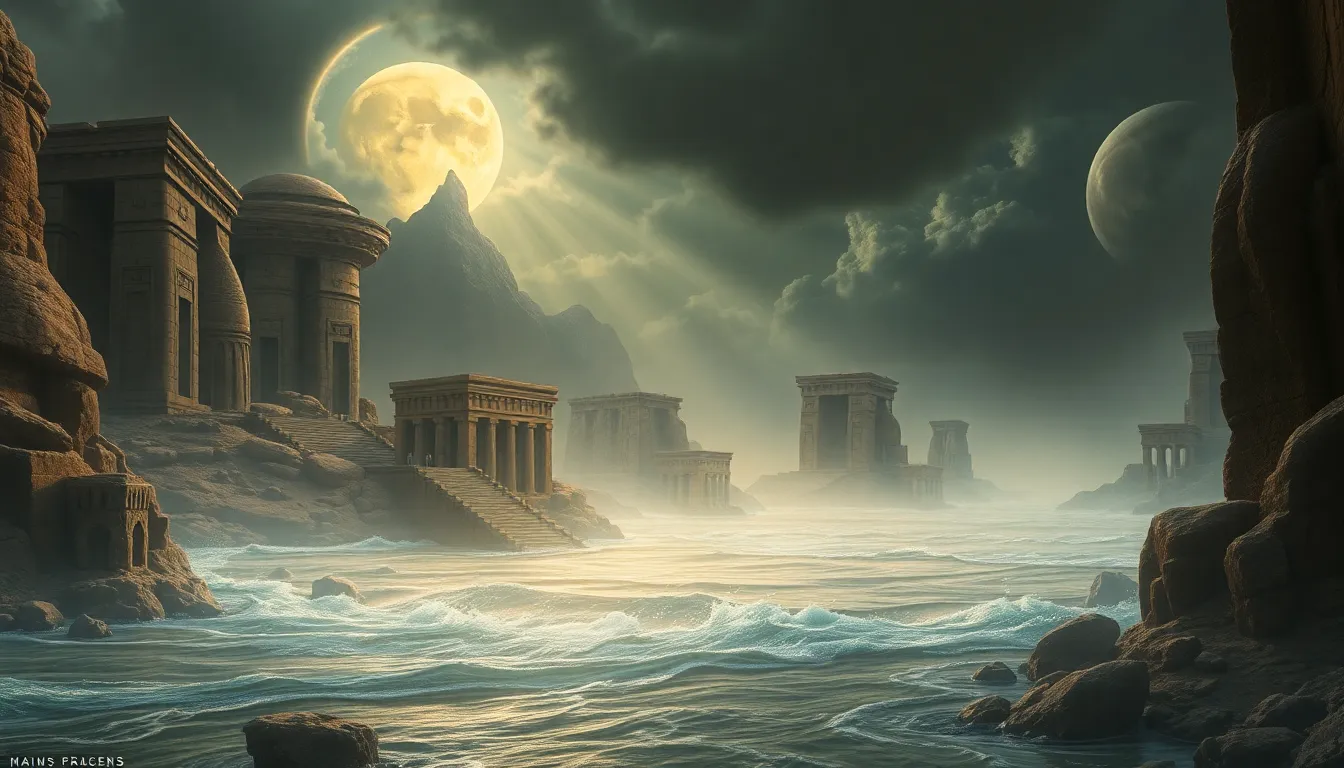The Flood Myths of the Ancient Near East: A Rich Tapestry of Legends
1. Introduction to Flood Myths
Flood myths have been a pervasive element across various cultures throughout history, often serving as a narrative device to explain natural disasters and the moral lessons derived from them. These myths frequently reflect societal beliefs and values, showcasing humanity’s relationship with the divine and the environment. The ancient Near East, a cradle of civilization, holds a significant place in the study of these myths, offering rich and varied narratives that continue to captivate scholars and enthusiasts alike.
This article aims to explore the flood myths of the ancient Near East, focusing on their historical context, major texts, thematic elements, and their enduring legacy. Through a comparative analysis of these myths, we can gain insights into the human experience and the cultural fabric of ancient societies.
2. Historical Context of the Ancient Near East
The ancient Near East comprises a diverse geographic and cultural landscape that includes modern-day countries such as Iraq, Syria, and parts of Turkey and Iran. This region is home to some of the world’s earliest civilizations, including the Sumerians, Akkadians, Babylonians, and Assyrians. Each of these cultures contributed to a rich tapestry of mythology and literature.
Major civilizations of the region:
- Sumerians: Known for creating one of the earliest writing systems, cuneiform, and for their extensive pantheon of gods.
- Akkadians: Famous for their military prowess and the unification of Sumerian and Akkadian cultures.
- Babylonians: Renowned for their contributions to law, astronomy, and literature, including the famous Code of Hammurabi.
- Assyrians: Known for their powerful empire and advancements in art, architecture, and military technology.
The environment of the ancient Near East, particularly the frequent flooding of the Tigris and Euphrates rivers, played a significant role in shaping these flood narratives. These natural disasters often inspired myths that reflected both the fear and reverence the ancients had for their surroundings.
3. The Epic of Gilgamesh: A Foundational Text
The Epic of Gilgamesh is one of the oldest known literary works, dating back to around 2100 BCE. This epic tells the story of Gilgamesh, a king of Uruk, and his quest for immortality. Central to this narrative is the flood story, where the character Utnapishtim is tasked by the gods to build an ark to survive a great flood intended to cleanse the earth.
Utnapishtim’s narrative parallels that of Noah in the biblical account, highlighting common themes of divine judgment and human survival. The flood in the Epic of Gilgamesh serves as a pivotal moment that emphasizes the transience of life and the inevitability of death, providing a stark contrast to the hope of rebirth found in other flood narratives.
4. The Atrahasis Epic: Insights into Creation and Destruction
The Atrahasis Epic, dating to the 17th century BCE, presents a comprehensive account of creation and the subsequent flood. In this myth, the gods create humanity to relieve them of their labor, but the noise of humanity becomes unbearable. In response, the god Enlil decides to send a flood to annihilate mankind.
The Atrahasis story explores several themes:
- Humanity: The relationship between gods and humans, where humans are seen as both a blessing and a burden.
- Divine displeasure: The reasons behind the flood reflect the gods’ frustrations with humanity.
- Survival: Atrahasis, like Utnapishtim, builds a vessel to survive, showcasing resilience against divine wrath.
5. The Biblical Account of Noah: Parallels and Divergences
The Genesis account of Noah’s Ark, found in the Hebrew Bible, shares notable similarities and differences with the Mesopotamian flood myths. In the biblical narrative, God decides to flood the earth due to humanity’s wickedness but spares Noah and his family, instructing him to build an ark.
Key points of comparison include:
- Divine intention: Both narratives depict a flood as a form of divine judgment.
- Survival and covenant: Noah’s story emphasizes a covenant with God following the flood, marking a new beginning for humanity.
- Theological implications: The Noah narrative introduces themes of mercy and redemption that are less pronounced in earlier myths.
6. Flood Myths in Canaanite and Ugaritic Literature
Canaanite myths also feature flood narratives, particularly in the Baal Cycle, which depicts the struggle between the storm god Baal and the sea god Yam. This mythological framework presents chaos versus order, with Baal’s victory symbolizing the triumph of civilization over chaos.
Ugaritic texts, which provide insights into Canaanite beliefs, further illustrate the complexity of flood narratives in the region. These texts offer a rich understanding of how ancient peoples interpreted the forces of nature and their impact on human existence.
7. Symbolism and Themes in Flood Myths
Flood myths often carry profound symbolism and recurring themes that resonate across cultures:
- Rebirth: Many narratives depict the flood as a cleansing force, allowing for new beginnings.
- Divine judgment: The flood serves as a mechanism for divine retribution, reflecting humanity’s moral failings.
- Human resilience: Survivors of the flood embody the spirit of resilience and the will to start anew.
Water, as a symbol in these myths, represents both destruction and life, illustrating the duality of nature and the complexities of human existence.
8. Archaeological Evidence and Historical Validity
Archaeological findings have provided evidence of catastrophic flooding events in the ancient Near East, supporting the idea that these myths may be rooted in historical occurrences. Sites such as Ur and Nippur reveal sediment layers indicative of significant flood events.
The impact of such natural disasters on societies likely played a crucial role in the formation of flood myths, as communities sought to make sense of their experiences and preserve their histories through storytelling.
9. Modern Interpretations and Relevance
Flood myths continue to resonate in contemporary culture, frequently appearing in literature, art, and film. They serve as cautionary tales about humanity’s relationship with nature and the consequences of moral failing.
In environmental discourse, flood myths are particularly relevant as they underscore the need for stewardship of the earth and a recognition of the power of natural forces. The themes of survival and resilience found in these narratives inspire modern audiences to confront contemporary challenges.
10. Conclusion: The Enduring Legacy of Flood Myths
Through our exploration of the flood myths of the ancient Near East, we uncover enduring themes of humanity, morality, and the natural world. These narratives not only provide insight into the cultures that produced them but also reflect universal truths about the human experience. The study of these myths enriches our understanding of history and the timeless struggle between chaos and order, destruction and rebirth.
As we continue to study and reflect on these ancient stories, we recognize their significance in shaping human thought and their relevance in today’s world.



